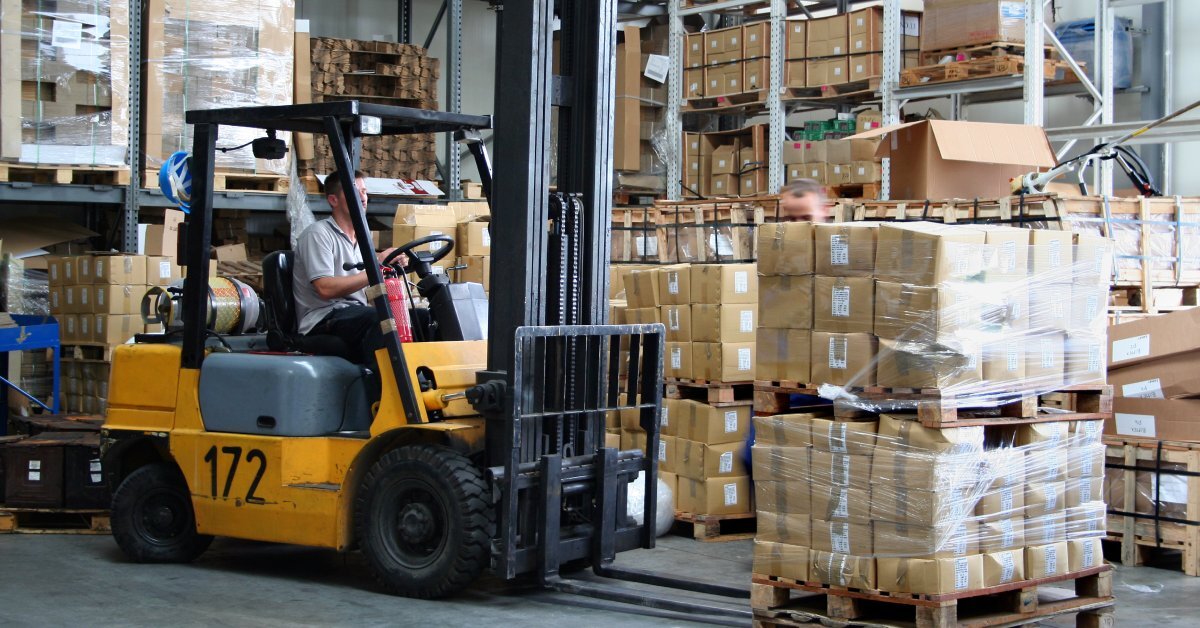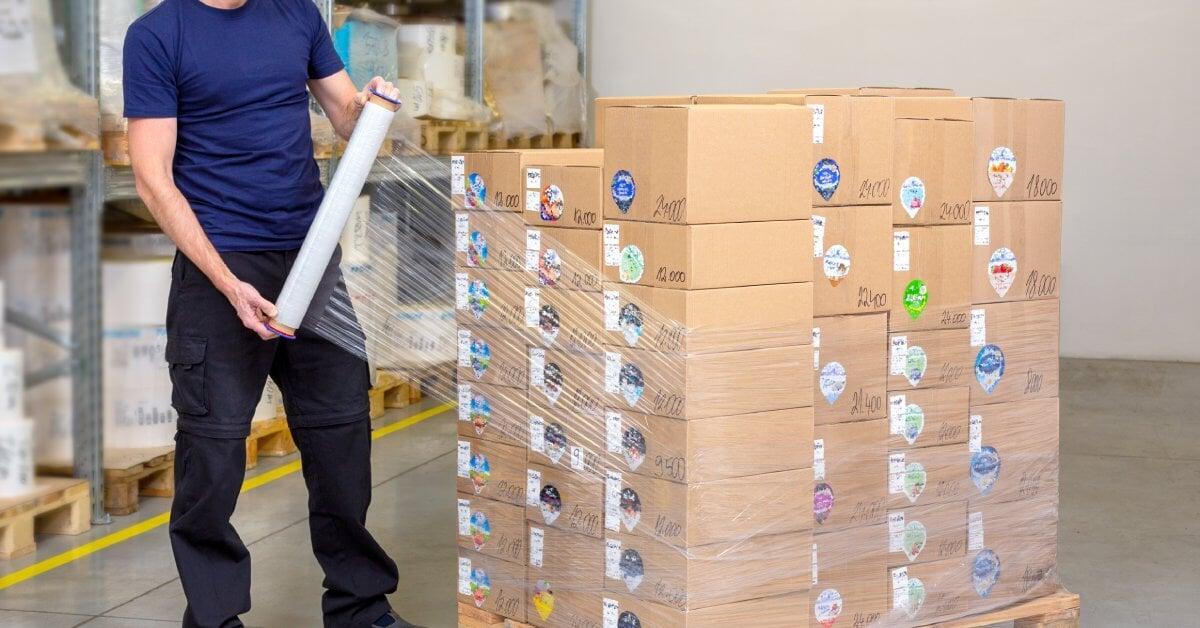
As a warehouse manager, you make countless decisions every day to keep your operations running smoothly. One of the most critical choices involves how you secure your shipments. When it comes to pallet strapping versus wrapping, it can be tough to know what’s best for your cargo. Both methods are popular for good reasons, but they offer different advantages.
This guide will break down the key differences between strapping and wrapping to give you a clearer picture of which method aligns with your priorities.
Cost-Effectiveness
When you compare strapping and wrapping, you need to consider both the initial investment and the ongoing expenses involved.
Strapping often has a lower upfront cost for manual tools. Hand-tensioners and sealers are relatively inexpensive, making it an accessible option if you are just starting your business or have a limited budget. However, the manual labor involved can add up. If you move to automated strapping machines to handle higher volumes, the initial equipment cost increases significantly, but you gain major savings in labor and speed.
Manual stretch wrapping is possible with handheld dispensers, but for any significant volume, a machine becomes necessary for consistency and efficiency. The initial cost of the machine as well as the ongoing cost of stretch film is a major consideration. The amount of film used per pallet can quickly add up, making it a substantial part of your packaging budget.

Load Stability
Ensuring your cargo remains stable during transit is fundamental to preventing damage and loss.
Pallet strapping excels at securing heavy, dense, and uniform loads of construction materials, metal parts, or bundled lumber. The high tensile strength of strapping, particularly steel strapping, cinches the load tightly to the pallet to prevent any shifting or movement. For items that might compress under pressure, strapping provides a secure hold without needing to cover the entire pallet.
Conversely, stretch wrapping provides superior stability for irregularly shaped or mixed loads. If you are shipping a pallet with boxes of different sizes or items with awkward angles, wrapping is best. The film conforms to the contours of the load, unitizing everything into a single, cohesive block. While strapping secures a load at specific points, wrapping encases the entire pallet to create a stable package from top to bottom.
Ease of Use
How easily and quickly your team can secure a pallet directly impacts your warehouse’s productivity.
Manual strapping can be a physically demanding task. It requires operators to thread the strap, apply the right amount of tension with a tool, and then seal it. While experienced workers can be quite fast, there is a learning curve, and the process can be slow for newcomers. This is where automated strapping machines make a huge difference. These machines can apply and seal straps in seconds with minimal human intervention, simplifying the process for your team.
Applying stretch wrap manually is often considered easier than manual strapping. Using a handheld dispenser, an operator can walk around the pallet and apply the film with relative ease.
However, achieving consistent tension and proper overlap by hand can be tricky and physically tiring. To truly simplify the process and boost efficiency, automated stretch wrappers are the way to go. An operator just needs to place the pallet on the turntable and press a button. The machine handles the rest. This automation drastically reduces the physical strain on your employees and makes the wrapping process more straightforward.
Time Efficiency
In a busy warehouse, every second counts, and manually strapping a pallet can be a time-consuming process. Your operator has to position the straps, tension each one individually, and then seal them. This might take several minutes per pallet, which can create a bottleneck in your shipping department. Automated strapping machines dramatically speed this process up.
Manual stretch wrapping can also be a slow procedure, as it requires an operator to circle the pallet multiple times to get adequate coverage. It’s often faster than manual strapping for a single operator but can still be a drag on efficiency. The real time savings come from automated stretch wrappers. These machines can wrap a pallet securely and free up your operator to handle other tasks, such as staging the next load.

Environmental Impact
Sustainability is an increasingly important consideration for modern businesses. When you evaluate strapping and wrapping, think about the waste each method generates.
Strapping often produces less material waste per pallet compared to wrapping, especially when using polyester or polypropylene straps. You are only using a few bands of material to secure the load. Using automated palletizing equipment for strapping can minimize waste by applying the exact amount of material needed, eliminating excess cutoffs.
Stretch wrapping uses a larger volume of plastic film to cover an entire pallet. While many stretch films are technically recyclable, the process can be challenging. However, you can now find films made with recycled content or biodegradable options. Furthermore, modern stretch wrapping machines are designed to pre-stretch the film, which can reduce material usage by over 50% compared to manual wrapping.
Cargo Protection
Aside from keeping your load from shifting, you need to protect it from external elements and potential damage.
Stretch wrapping offers excellent protection against dust, dirt, and moisture and keeps your products clean and dry during transit and storage. This is particularly important for items with sensitive packaging, such as food products or electronics. The layers of film also provide a degree of protection against minor impacts, scuffs, and puncture damage.
Pallet strapping offers very little in the way of surface protection. The straps secure the load, but the products themselves remain exposed to the elements. Dust, rain, and debris can easily get to your cargo. Strapping also offers no protection from punctures or tears. In some cases, the high tension of the straps can cause damage to the edges of softer boxes if edge protectors are not used.
Choosing the Ideal Method for Your Cargo
After comparing pallet strapping versus wrapping, how do you decide what’s best for your cargo? The answer depends on your specific operational needs and the nature of the products you ship.
If your primary focus is on securing heavy, stable, and uniform loads and you need maximum load containment with minimal material, pallet strapping is likely your best bet. On the other hand, if you ship a variety of irregularly shaped or mixed-item pallets and your priority is protecting your cargo from dust, moisture, and minor damage, stretch wrapping is the superior choice.
You might find that a combination of both methods works best. Some companies use a few straps to stabilize a load before wrapping it for complete protection.
When you’re ready to optimize your packaging process, explore PackSmart’s complete selection of high-quality packaging equipment to find the perfect solution for your warehouse.
